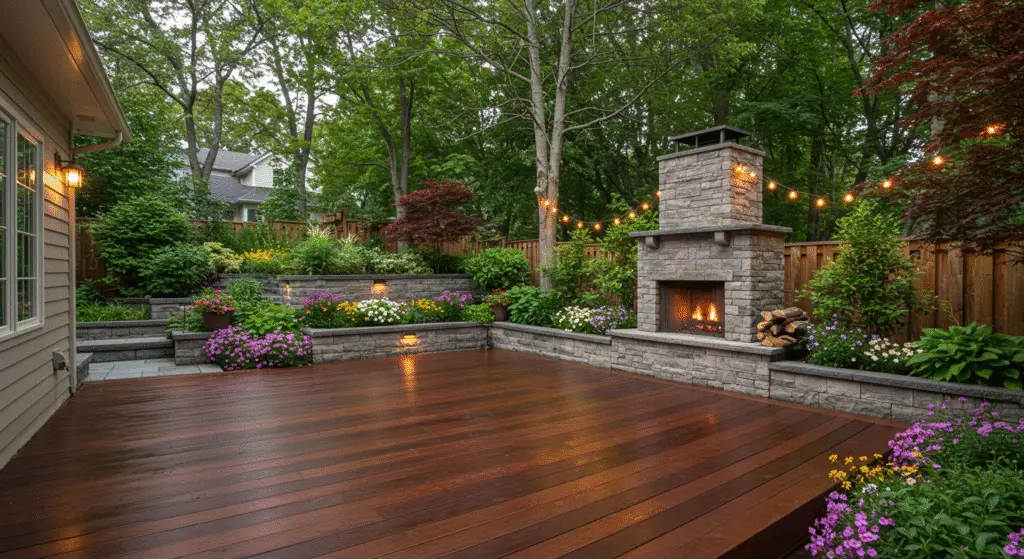
Backyard renovation cost is one of the first questions that comes to mind when planning an outdoor makeover. Whether you’re upgrading your patio, adding a garden path, or building a full outdoor kitchen, understanding the costs involved is key to staying on budget and avoiding surprises.
This article will walk you through the main factors that affect what you’ll spend and offer practical tips to help you manage costs effectively.
Average Backyard Renovation Cost
The average cost to renovate a backyard can vary widely depending on the scale and style of the project. A basic makeover might include new grass, plants, and some lighting. In contrast, a more extensive design could involve features like custom stonework, decks, hot tubs, and full landscaping.
Knowing what type of renovation you’re aiming for is the first step in estimating your total expenses.
Size and Scope
The size of your yard and the extent of the work being done are major cost drivers. A small lawn with some planted beds is usually more affordable than a full redesign of a large outdoor space.
If your renovation involves digging, leveling, or adding hardscape elements, expect your costs to rise. The more complex the design, the higher the price in terms of labor and materials.
Type of Materials
Material selection plays a big role in what you’ll spend. For example:
- Concrete and gravel tend to be more budget-friendly
- Stone, flagstone, or brick can significantly raise costs
- Wood fencing and composite decking also vary in price based on quality
Opting for premium materials will naturally increase your budget, while choosing alternatives can help reduce the overall backyard renovation cost.
Labor and Professional Services
Hiring professionals such as landscape designers, contractors, and electricians adds value but also affects your budget. The price of labor depends on the region, the type of work, and how long the project takes.
You can lower costs by handling simpler tasks yourself, such as planting, painting, or installing basic features. However, specialized work like electrical wiring or water systems is best left to the pros.
Hardscaping and Softscaping
Hardscaping refers to permanent, non-living elements like patios, decks, and walkways. These typically require more investment due to material and labor demands.
Softscaping includes living features such as grass, plants, trees, and flower beds. While generally more affordable, softscaping can still add beauty and structure to your space.
Balancing these two elements thoughtfully will help you stay within your desired backyard renovation cost.

Outdoor Features
Many homeowners add functional features to enhance outdoor living, such as:
- Fire pits
- Lighting systems
- Water fountains or ponds
- Outdoor kitchens or seating areas
- Pergolas or gazebos
These features can significantly improve the usability and enjoyment of your yard, but they also increase renovation expenses. Prioritizing the ones that bring the most value to your lifestyle can help manage the budget effectively.
Permits and Approvals
Depending on your location and the complexity of your renovation, you may need building permits or approvals from local authorities or homeowner associations.
Permit fees can vary and may also extend the project timeline. It’s important to research local codes and requirements before you start, to avoid unexpected costs or delays.
Maintenance and Long-Term Costs
Once the renovation is complete, maintenance is an ongoing consideration. Lawn care, seasonal plant upkeep, and cleaning outdoor features all take time and resources.
Choosing low-maintenance plants and materials can help reduce future work and expense. Additionally, investing in quality during the renovation may reduce the need for costly repairs later on.
Tips to Reduce Backyard Renovation Cost
If you’re looking to stretch your budget, these tips can help you save:
- Divide your project into smaller phases
- Reuse or repurpose materials when possible
- Shop for deals during off-seasons
- Choose native plants that require less care
- Do simple tasks like mulching or painting yourself
With some creativity and careful planning, it’s possible to achieve an impressive result without overspending.

Return on Investment
A well-designed backyard isn’t just for personal enjoyment — it can also increase the resale value of your home. Real estate experts often highlight outdoor spaces as key features that attract buyers.
While not every backyard project yields the same financial return, thoughtful improvements can add curb appeal and functional outdoor living space, making your property more desirable.
Conclusion
Backyard renovation cost varies depending on the size, scope, materials, labor, and features you choose to include. Planning your project carefully, prioritizing essentials, and keeping future maintenance in mind can help you stay on budget while creating a space you’ll love.
Whether you’re envisioning a peaceful retreat, a family-friendly garden, or a stylish area to entertain, a backyard renovation can bring lasting value to your home and lifestyle — as long as it’s approached with a clear understanding of the costs involved.
